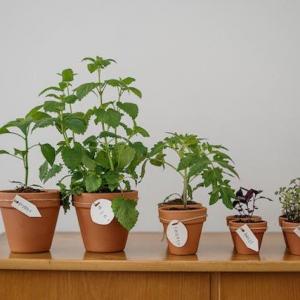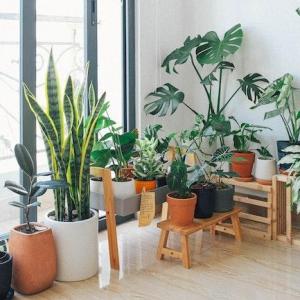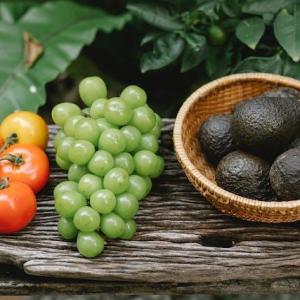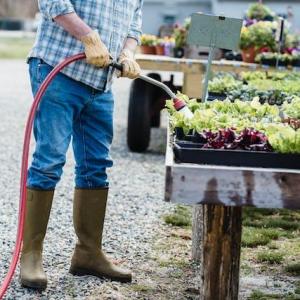
Soil Health
The foundation of a successful garden begins with healthy soil. Instead of relying on synthetic fertilizers and pesticides, focus on improving soil health naturally. Add organic matter such as compost, leaf litter, or well-rotted manure to enrich the soil and improve its structure. This enhances nutrient availability, water retention, and promotes beneficial soil microorganisms. Regularly test the pH of your soil to ensure it is within the optimal range for plant growth.Composting
Composting is a valuable practice that reduces waste and provides a nutrient-rich soil amendment. Create a compost pile or invest in a composting bin to recycle kitchen scraps, yard waste, and other organic materials. Avoid adding meat, dairy, or oily substances to your compost, as they can attract pests. Regularly turn the compost to aerate it and speed up the decomposition process. The resulting compost can be used as a natural fertilizer to nourish your plants.Water Conservation
Conserving water is crucial in sustainable gardening, especially in regions prone to drought or water scarcity. Implement water-saving strategies such as installing a rainwater harvesting system to collect and store rainwater for irrigation. Use mulch around plants to retain moisture in the soil and reduce evaporation. Consider planting drought-tolerant or native plants that require less water. Group plants with similar water needs together, allowing for more efficient watering.Organic Pest Control
Avoid using synthetic pesticides that can harm beneficial insects, birds, and other wildlife. Instead, practice organic pest control methods to manage pests naturally. Encourage beneficial insects like ladybugs, lacewings, and bees by planting flowers that attract them. Use physical barriers such as nets or row covers to protect plants from pests. Introduce natural predators like nematodes, predatory insects, or birds to control pest populations. Additionally, practicing proper garden hygiene by removing dead or diseased plants helps prevent the spread of pests and diseases.Native and Pollinator-Friendly Plants
Incorporate native plants into your garden as they are adapted to the local climate and require less water and maintenance. Native plants also provide food and habitat for local wildlife, including pollinators like bees, butterflies, and birds. Choose a variety of flowering plants that bloom at different times to provide a continuous food source for pollinators throughout the year. Avoid using invasive species, as they can outcompete native plants and disrupt local ecosystems.Organic and Sustainable Gardening Products
When purchasing gardening products, opt for organic and sustainable options. Look for organic seeds, soil amendments, and fertilizers that are free from synthetic chemicals. Use natural pest control methods such as neem oil, insecticidal soaps, or companion planting. Consider making your own organic plant sprays using ingredients like garlic, onion, or chili peppers. Additionally, choose tools and garden supplies made from sustainable materials, such as bamboo or recycled plastic.Sustainable Garden Design
Design your garden with sustainability in mind. Incorporate features like rain gardens or bioswales to manage stormwater runoff and prevent erosion. Use permeable materials for pathways, patios, or driveways to allow rainwater to infiltrate the soil. Create wildlife-friendly areas such as bird feeders, birdhouses, or water features to attract and support local fauna. Plan your garden layout to maximize sunlight, reduce water runoff, and create efficient watering zones.Integrated Pest Management
Implement Integrated Pest Management (IPM) techniques to minimize the use of chemical pesticides. IPM involves monitoring and identifying pests, setting action thresholds, and using a combination of cultural, biological, and mechanical controls. For example, pruning affected plant parts, using sticky traps, or manually removing pests can help manage infestations. This approach aims to maintain pest populations at a level where they do not cause significant damage while minimizing the impact on beneficial organisms.Conservation of Wildlife and Biodiversity
Encourage biodiversity in your garden by providing habitats for a variety of wildlife. Incorporate features such as birdhouses, bee hotels, or bat boxes to attract beneficial creatures. Create a diverse range of plant species, including those that produce seeds, berries, or nectar for wildlife to feed on. Avoid using chemical fertilizers and pesticides that can harm beneficial insects, birds, and other wildlife. By nurturing a balanced ecosystem, you can establish a self-regulating garden that requires fewer interventions.Education and Community Engagement
Spread awareness about sustainable gardening practices by sharing your knowledge and experiences with others. Engage in community initiatives, join local gardening groups, or participate in workshops and events focused on sustainable gardening. Encourage schools and community organizations to incorporate sustainable gardening practices into their curriculum or projects. By inspiring and educating others, you can contribute to a larger movementtowards sustainable gardening practices.Reduce, Reuse, Recycle
Apply the principles of the 3 Rs (reduce, reuse, recycle) in your garden to minimize waste and conserve resources. Reduce waste by avoiding unnecessary packaging and opting for bulk purchases of gardening supplies. Reuse materials such as containers, pots, or wooden pallets for planting or creating raised beds. Repurpose items like old furniture, tires, or bottles as unique planters or garden decorations. Recycle materials such as plastic bottles or cardboard by transforming them into seed starters or mulch.Responsible Lawn Care
Lawns can consume large amounts of water and require regular maintenance. Consider reducing the size of your lawn and replacing it with native plants, groundcovers, or low-maintenance alternatives. Use organic fertilizers and avoid over-fertilizing, which can lead to water pollution. Set your lawnmower blades higher to promote healthier grass and reduce water evaporation. Leave grass clippings on the lawn as natural mulch to retain moisture and provide nutrients.Seasonal Planting and Crop Rotation
Practice seasonal planting and crop rotation to optimize plant health and reduce the risk of pests and diseases. Planting appropriate crops for each season ensures optimal growth and productivity. Rotate crops within different areas of your garden to break pest and disease cycles. This reduces the need for chemical interventions and promotes soil health by preventing nutrient depletion.Conservation of Energy
Consider energy-efficient practices in your garden design and maintenance. Use solar-powered garden lights or LED bulbs to minimize energy consumption. Install timers or motion sensors for outdoor lighting to reduce unnecessary usage. Utilize natural shade from trees or structures to cool outdoor areas instead of relying on energy-intensive cooling systems. Choose manual tools or energy-efficient equipment for garden tasks whenever possible.Continuous Learning and Adaptation
Gardening is a dynamic process, and there is always something new to learn. Stay updated on sustainable gardening practices by reading books, attending workshops, or following reputable gardening websites and blogs. Adapt your gardening techniques based on your observations and experiences. Experiment with different methods and plants to find what works best for your specific garden and local conditions.Remember, creating a sustainable and eco-friendly garden is a journey that requires patience and commitment. Start by implementing a few strategies that align with your values and gradually incorporate more sustainable practices over time. By nurturing a thriving and environmentally friendly garden, you contribute to the well-being of the planet and inspire others to follow suit. Enjoy the process of connecting with nature, observing its wonders, and creating a sustainable haven in your own backyard.
Article
Be the first comment
Elite Article














